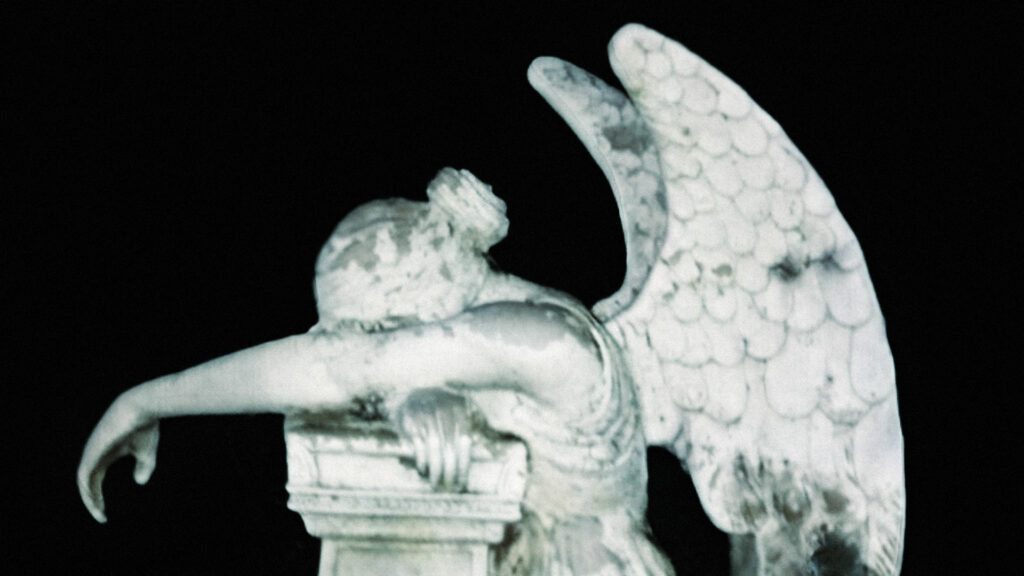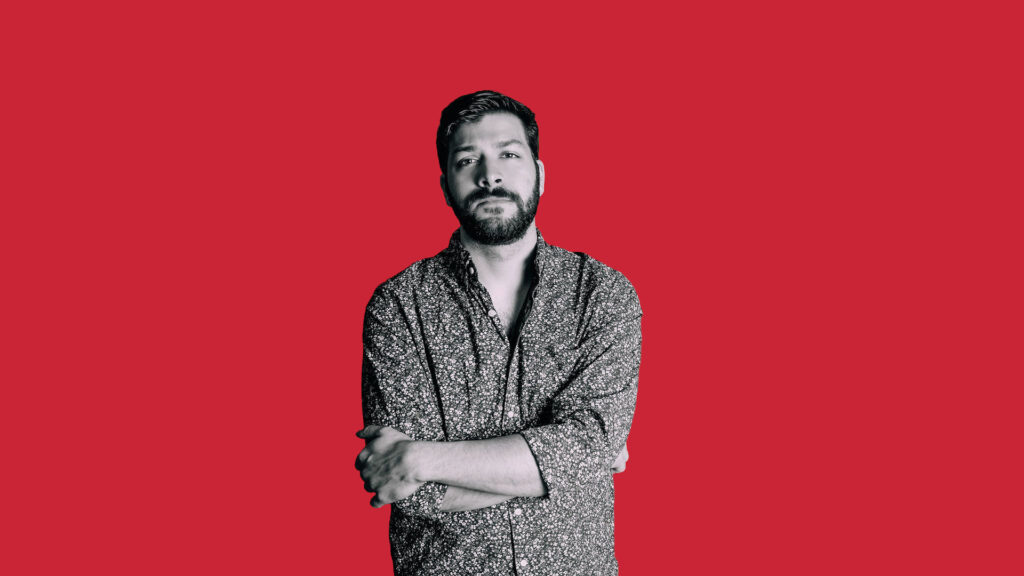I asked Sofia Martins Gray about discovering the constituent parts that add up to make her ‘Starsha Lee’. Misogynistic attitudes and retrogressive framing attempts collide with her concerns with mortality in this account of her inimitable approach to creativity.
Let’s get stuck in, shall we? In a recent interview, you stated that you ‘discovered God was no longer up there in the clouds, but rather hanging in the horizon as proof of everyone else’s mortality.’ How did you come by this discovery, and how did it give rise to your role in Starsha lee?
Sofia: My family are countryside people, and the atmosphere is very religious. From a very early age, I was in contact with dead people and coffins as part of normality. This mixed with local festivities. This paradox created in me a sense of absurdity. I remember very well being in those festivities and feeling sad. Something was incoherent. Death and life were presented to me in the same place, and I couldn’t organise myself to accept that dichotomy. Other personal events took place, but I’ll leave that for another occasion.
There is a palpable awareness of mortality in a number of your self-portraits. Is it true to say that your childhood experiences with death first found their expression in those works before music, or is there a more nuanced history?
Sofia: My dad, apart from being a drummer and photographer back then, studied medicine. He’s a very modernist person, not like the rest of the family. So during my upbringing, I had a real skull in the living room and bits of skeletons and lab material around the house. In Portugal, doctors studied with real skeletons rather than plastic, which were not common. That also contributed to my awareness of death, yes. I’m going to say something very personal now: I started to be obsessed with the light of Polaroids because they remind me of a day, a scorching summer day, that I saw my mother crying desperately at her mother’s grave. I felt it right there. I knew things were over in no time. I never forgot that summer light amongst the graves. Whilst my dad gave me the Polaroid camera, my mother gave me the aesthetical motive.
That event took place when I was four years old. It was right after my grandmother died. A few years ago, before I came to London, I took a friend to visit my village in Portugal. I took him to the two cemeteries where I always go, and he started to cry, and he said, “Your world is so sad, Sofia”. It was like a slap in the face. I love my friend dearly, he’s a cinema critic now. Still, I suddenly realised that I might take my archaeological identity too far. There’s a song by Starsha Lee called “You’re Not Enough” about death, and the artwork was taken in my grandparents grave. You can see the sunlight in that picture, and I’m laughing at the absurdity of that. Crispin helped me with that shoot, and something extraordinary happened. I’ll save that for another occasion.
Can you take us through your early exploits in art, perhaps stirrings of what would eventually become Starsha Lee?
Sofia: I never say this because I haven’t worked on it yet, but I started drawing before primary school, and I used to draw many characters that I would be friends with. By the age of nine, I was already exploring watercolours, and at seventeen, I stopped drawing. Luckily one day, I met this girl, who was my best friend for many years, in a children’s library that we used to go to after school. She drew Starsha (at first, the name was Starsha Dearwaters) and told me I was that character, and it made sense. I created an extension of Starsha after that. We were both between eight and eleven when this happened, and were both having English classes already at school. During childhood, my dad used to bring me Caran D’Ache pencil colours whilst he was in Switzerland. To this day, I’m obsessed with paper and colour pencils. Everything that I am began with image creation.
What character traits of Starsha Lee survived into the band version? More importantly, how do those characteristics differ from your own?
Sofia: She is a child that witnesses the life events of others. The only unfortunate update is time. With time life brings you experiences and so many other layers of events that muffled your origin. I cannot stand time. To me, I would be just fine living in that village forever. Unfortunately, one has to do things in life. It’s a generalised behaviour made by a structured society. I remember being eight years old and thinking that I wanted to be like the old age ladies in my village – they sit down in the sun all day at their front doors. They are true philosophers. That’s living for me.
What was the main drive that caused your move from that village, and do you have plans to head back there one day and catch up on your ‘old age lady’ philosophy?
Sofia: I moved to London because Crispin asked me to live with him. Crispin and I are going to move to my village soon. I’m going to do another Master’s degree and take care of my cabbages and fruit trees in my backyard for the rest of my life. At last!
Sounds idyllic. We’ll discuss relevant aspects of your relationship with Crispin later. For now, do detail your musical ideas before they found a place in what would become Starsha Lee.
Sofia: To be honest, there were never musical ideas. They were pieces of prose and verses that I had written in Portuguese. It was a literary idea. At the beginning of Starsha Lee, I mainly wanted aesthetical violence, so, therefore, anything that would translate that feeling was adequate to me. Because I’m not a musician, making music – to me – is exclusively to do with translating something that doesn’t belong to it. I played bass in my teens, and I dropped it because, whilst I could play whatever was given to me or create some logical songs, the truth is the notes didn’t translate who I am. There’s no way around this: it translates you, or it doesn’t. I perform lyrics.
Aesthetical violence. Why, how and has that changed?
Sofia: I’m intentionally distinguishing between art and (daily) life by saying aesthetical violence. You should only channel your existential negativity or angst or any other heavyweight energetic field through art. That’s what art is for. Apart from trends, from art markets, record deals etc. – art is a human capacity that every individual can experiment with. When I started Starsha Lee, I was furious, but I only expressed that through the band. That’s why I started a band. The difference or the update I’m doing now is that I’m paying more attention to the medium I’m working in than I was before. I see rock n roll as a prison now. I have to respect its dominion.
For those new to your work, can you detail what you would do at a show that served as the execution of that violence?
Sofia: I tend not to care for vocals because I only use them as a tool or filter for expression. They can expect lyrical existentialism, involuntary movements as a Butoh practice and genderless behaviour. All is possible as long it’s honest and well-intended. Actually, the only time I have to pay attention to vocals is when I’m at the recording studio… it’s like a cut the crap and sing moment! I find that a bit boring.
You’ve received formal training for vocals. What improvements did you seek, and what were you keen to protect?
Sofia: Yes, fifteen years ago I went to music school, but I didn’t continue. In classical, they expect you to do nothing but train your breathing and make vowel sounds for three years. So it’s easy to unlearn once you’re out. I started lessons again a year ago, more or less. The improvement is more control in the diaphragm, but it’s a very slow process. Also, I’m not taking it as seriously as the other students as I’m not hoping to become an opera singer.
And considering how the penny has just dropped with me, that your self-image is that of a conceptual artist who happens to commit vocals in their work, no wonder you push back the title or box of singer. Was there ever a time when you did, however, commit to such a title? What set you free?
Sofia: I was never interested in being a musician. The reason why I went to music school was that I was interested in making operatic sounds. I’ll give you a recent example – the other day, I was listening to a PJ Harvey song and whilst singing along, I thought, “yeah, I could perform this with my body, but I cannot understand the pleasure of creating those notes”. That’s it in a nutshell. I have musicians in the family, I can see what drives them, but I’m not like that.
Talking of Polly, this could be a perfect moment to discuss how the reception of what you do is often regarded through a prism of female performers. Care to share a few of your thoughts on simulation, internalised misogyny and rock and roll’s uneasy acceptance of conceptual artistry?
Sofia: You never know your idols. That’s why they are your idols.
In a very simplistic way, I’ll say this: misogyny is an interpretation about women that, like other interpretations about other things, it became assimilated to the point that it’s not conscious anymore. In other words, it became culturally assimilated. Anything that becomes culturally assimilated can constitute a problem. To change that, a profound transformation in the mindset of people is required. These types of transformations are never superficial (at the surface) but rather at the collective subconscious.
I see male performers without a shirt on stage, and it’s considered normal. Still, when women do it, they are immediately sexualised and blamed for it. That’s an extension of the rape mindset. To make things even worse, I saw women blaming other women online because of their nipples being displayed on stage. Needless to say, that happened to me. This is beyond sad. Again, transforming the subconscious is a tough thing to do.
The real test would be for women who throw overly puritanical missives at you not only to realise what they’ve done but address their mindset with some kind of affirmative action. Is there merit in documenting these experiences outside of a medium which often supports these contradictory reactions?
Sofia: The most contradictory part of it all is when self-proclaimed riot girls blame other women for “knicker display”. But I’m not going into this here.
Do you always have such a clear idea of what you want to do in your pieces, considering the band and the portrait work were so distinctive since their arrival on your part of the underground circa 2016?
Sofia: The beginning of Starsha Lee was not a good place for me spiritually. Still, simultaneously, I was as free as it could be. I was doing every show in a sleep state, resonating a will of release. But as it happened, with anonymous online reports going on for years now and being cyberbullied to the point we opened a case with the Metropolitan Police that woke me up from my inner state. The worst thing that can happen for me is being awake during creation.
And the task now is to find your way back to recentering yourself, ‘Killing Heteronomy’ being a start?
Sofia: It’s a start, yes. Killing Heteronomy’s subject happened years before the band started, but as a concept, it’s the same. This song is a scream of freedom.
You described rock and roll as a prison once. Can one scream of freedom in a medium they regard as prison or is the paradox not a concern for you?
Sofia: Absolutely! It is a paradox! But unfortunately, life doesn’t always happen according to logical conclusions. I’m thinking of stopping, but first, I have to release some material to complete the circle.
Perhaps you’ll migrate into different genres of music which don’t encourage lazy pigeonholing of your concept?
Sofia: I’ll do video self-portraits using sound. I always wanted to use my voice as a sound maker, not a melody-singing formula. I like naked sounds. Do you ever notice the sound of a car honking? Or any other spontaneous naked sounds? That’s what I’m into. I have specific instruments that I absolutely love, and I listen to practically every day, organ, koto, ondes martenot and theremin.
Would you ever consider narrative, as in sequential portraits? Maya Deren has similar challenges from their peers.
Sofia: Yes, absolutely! At the moment, I’m focused on the equivalent of thoughts in moving images – the other day, my bathroom mirror was crooked, and I thought, “this mirror position expresses a fall”. I’m interested in simple things like this and others more complex, obviously. Everything in moving image is a narration.
Keen to see your approach and the evolution of such. Refreshingly, you aren’t trying to superimpose conventions of the theatre into film. Amazing to talk to you, do remind us when the single is going to be out.
The video is out, and the song will be available on our Bandcamp on the 16th of July.
Stay in touch with Sofia Martins:
Sofia Martins is also the lead singer for her band, named after her alias Starsha Lee:
John Clay’s book, Spiderfingers: The Russian Doll Stories is available via Public Pressure



